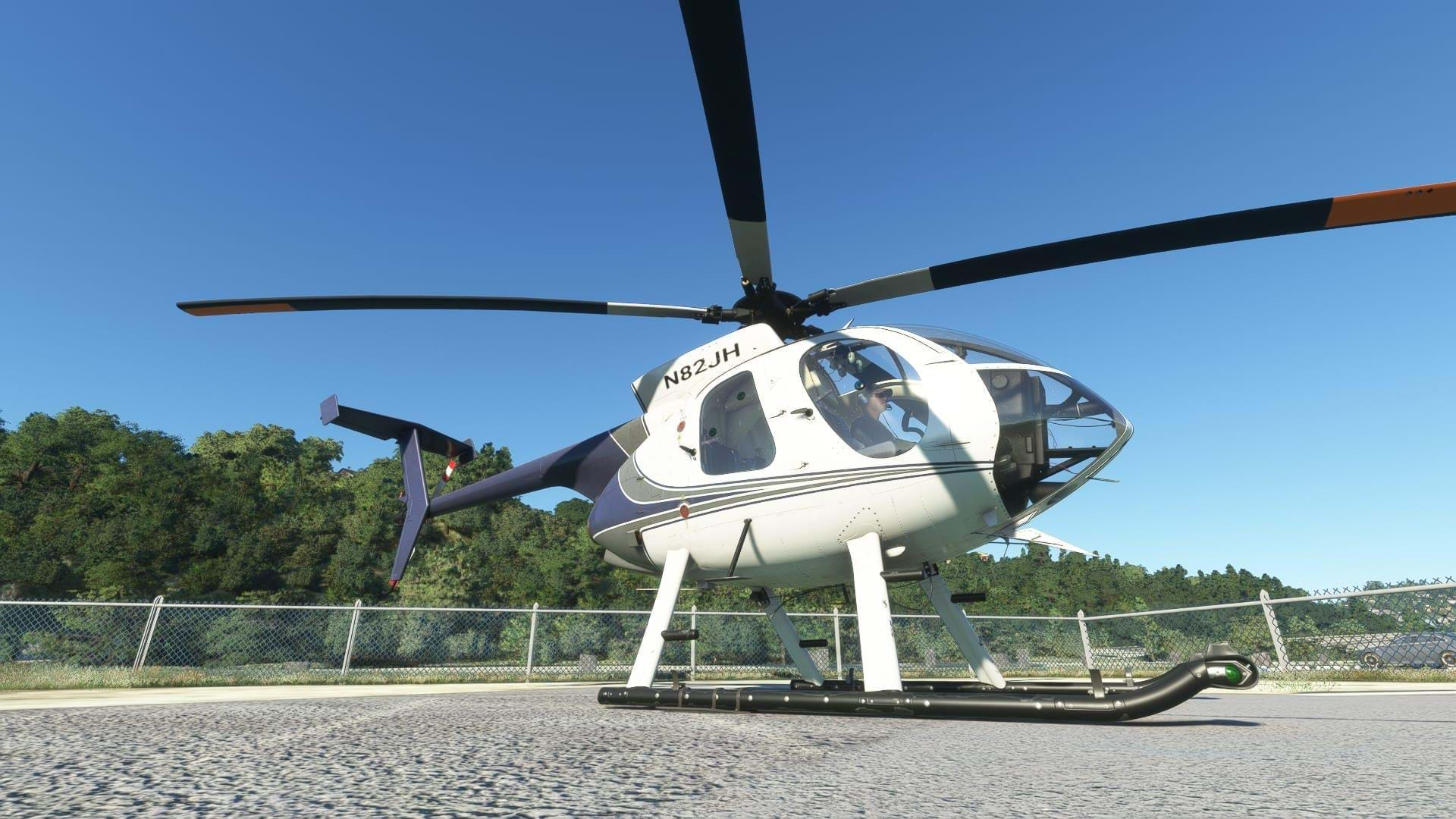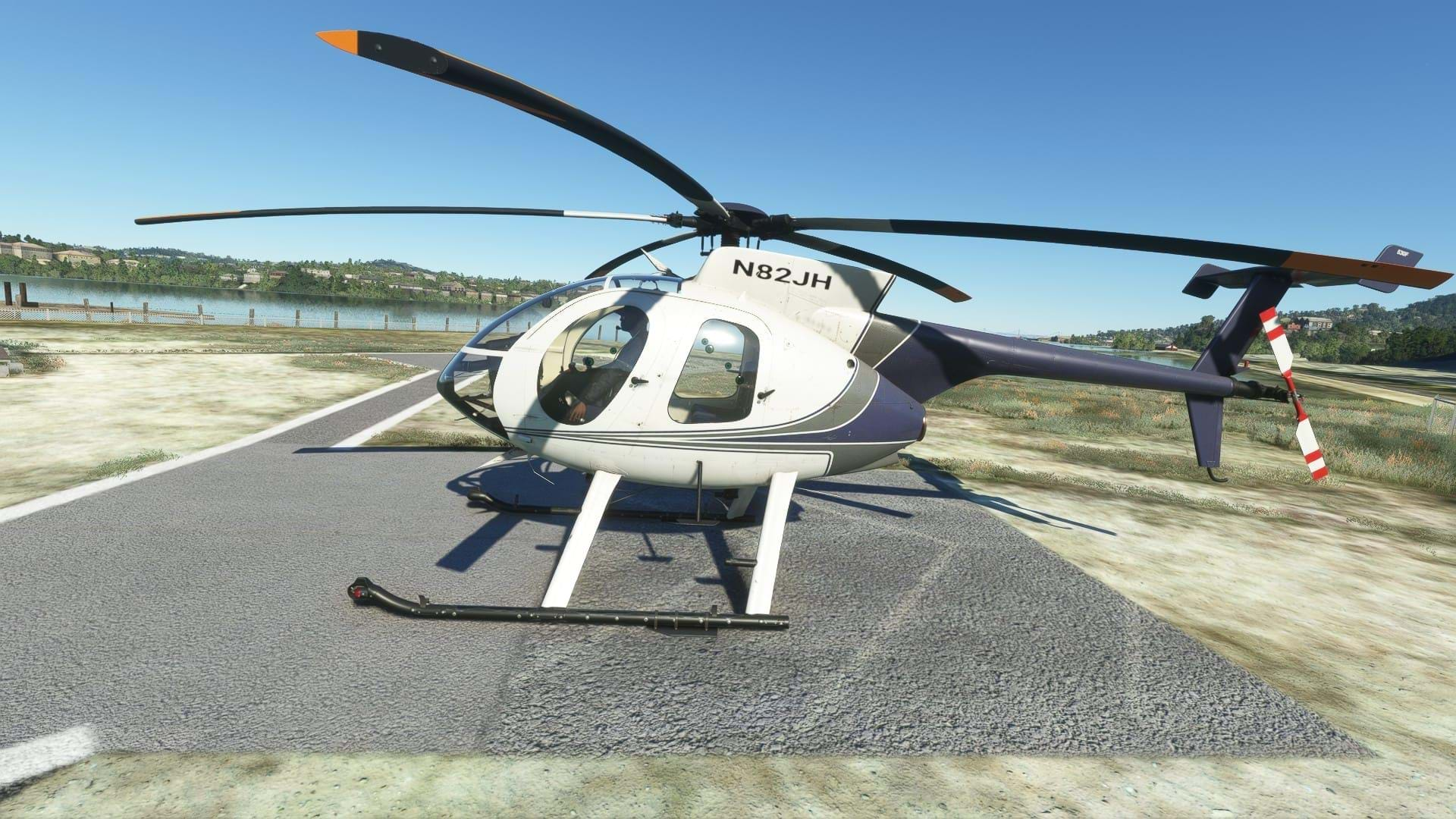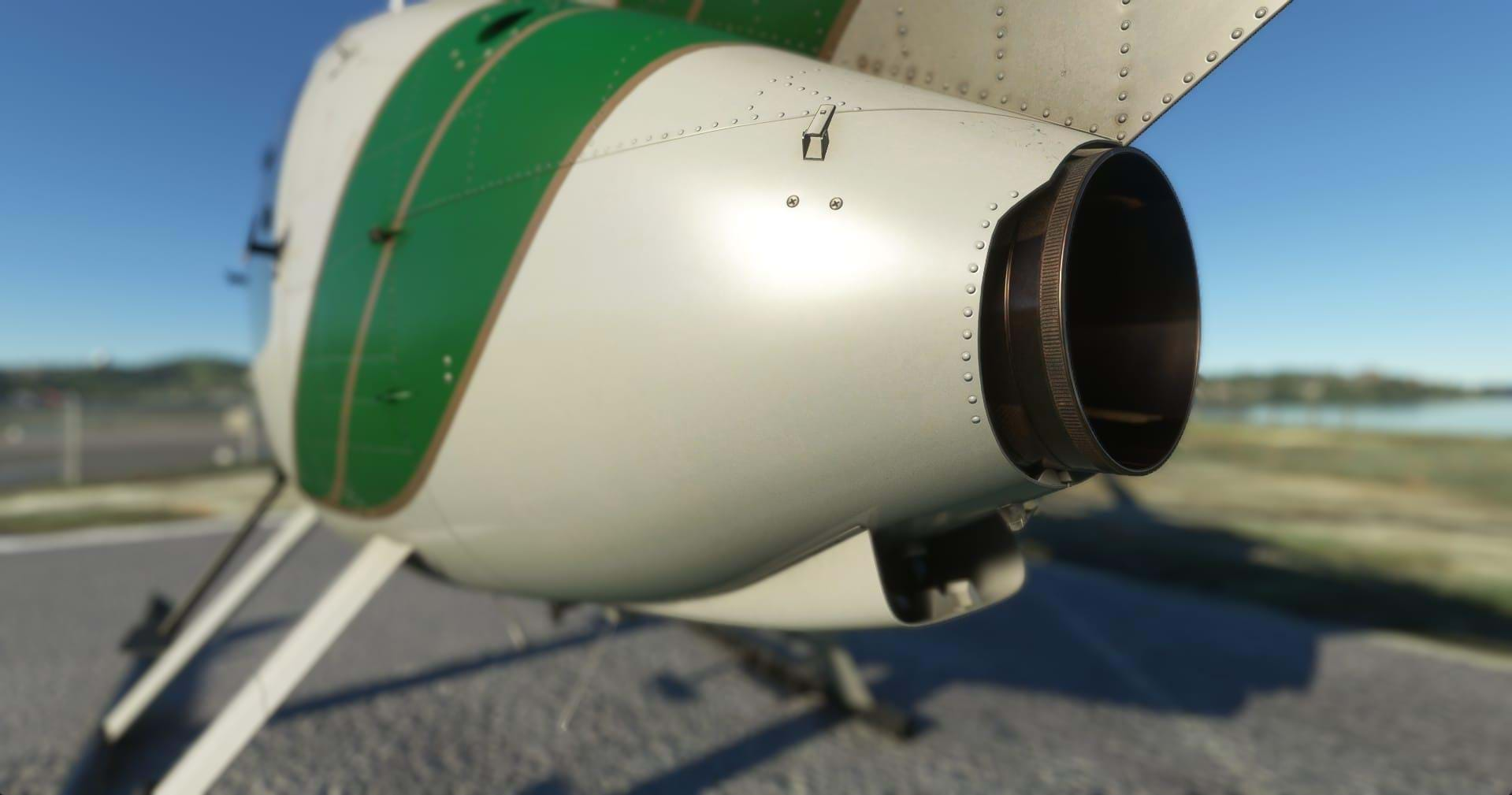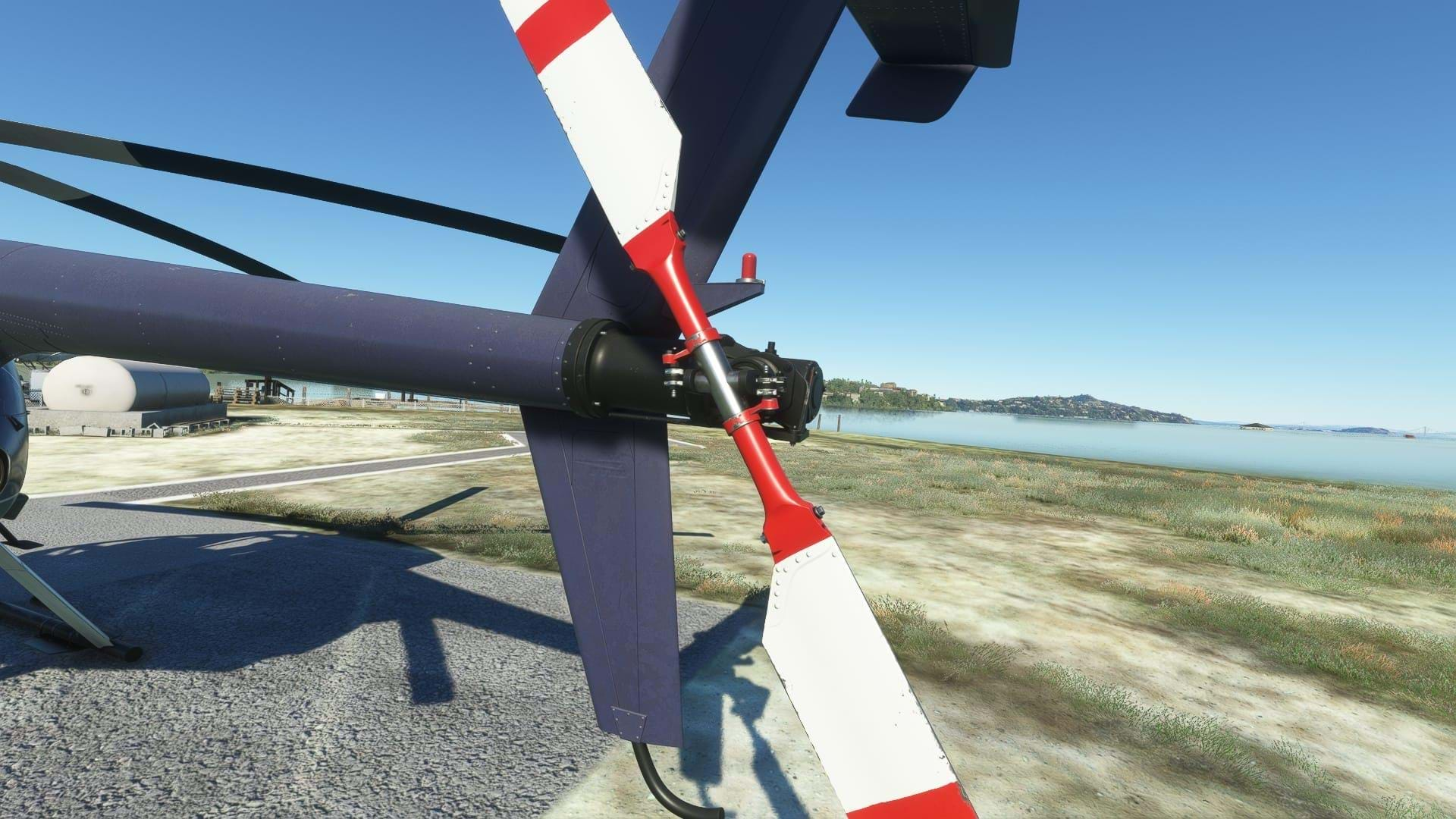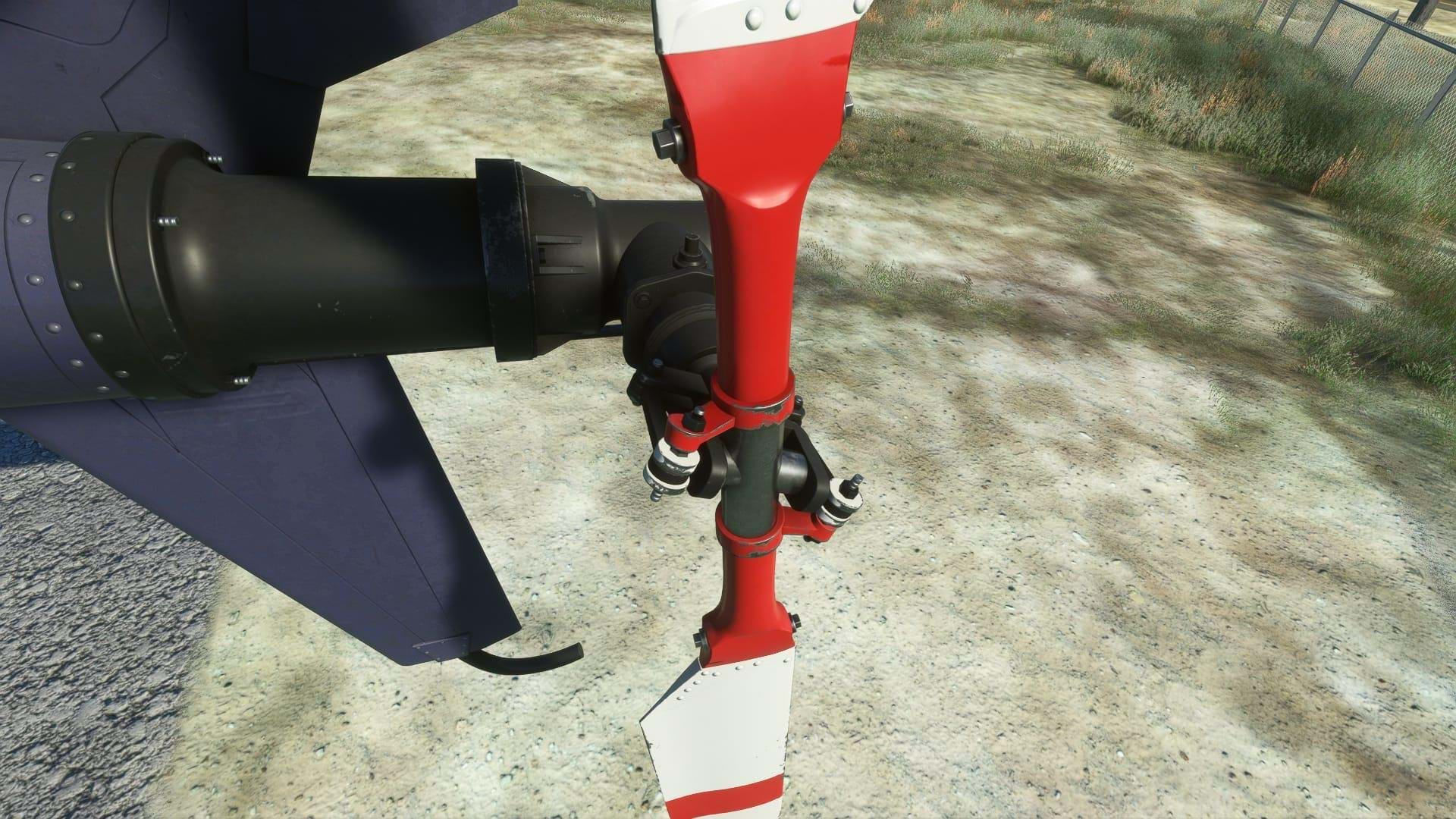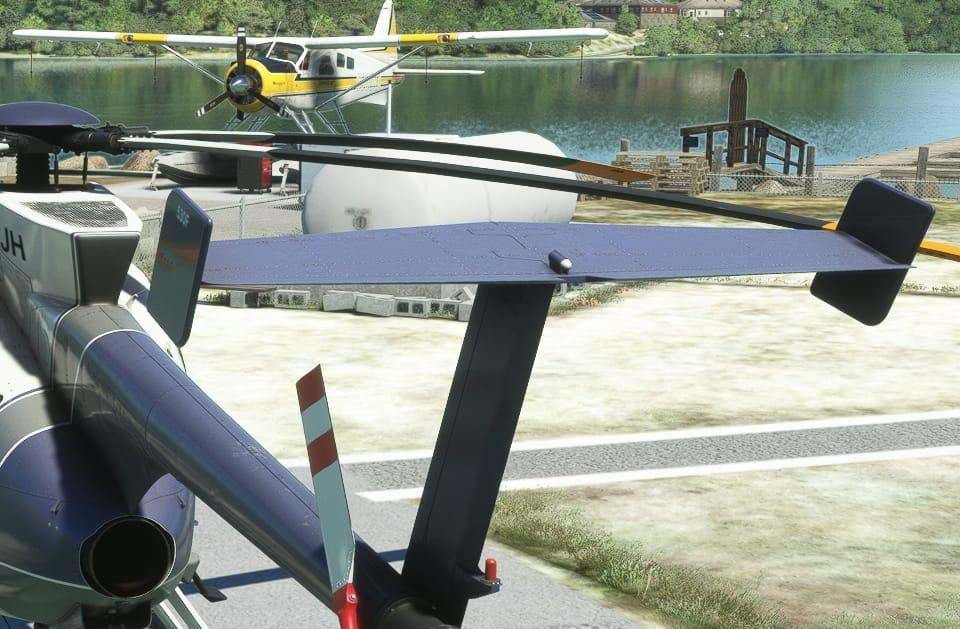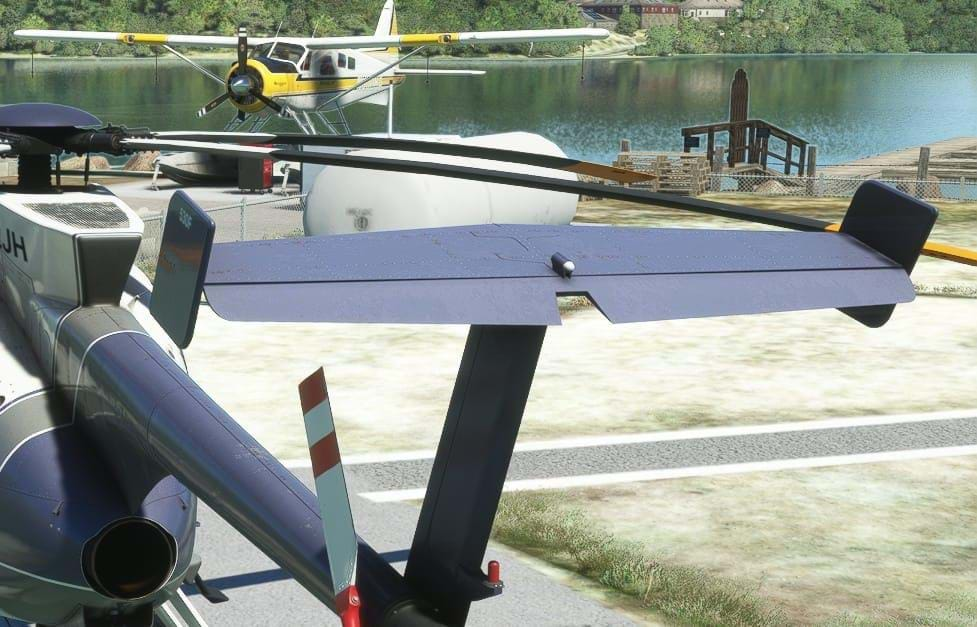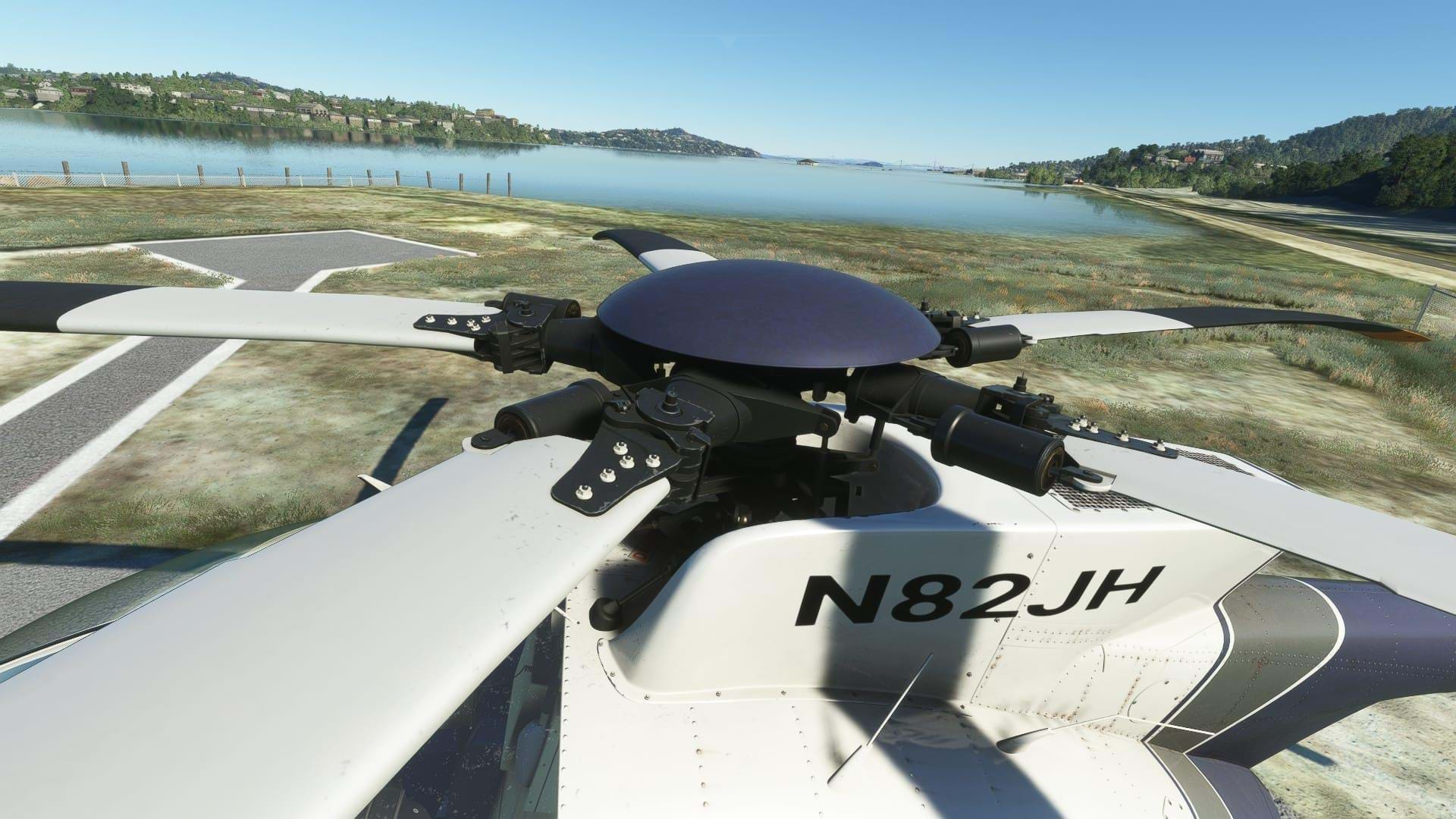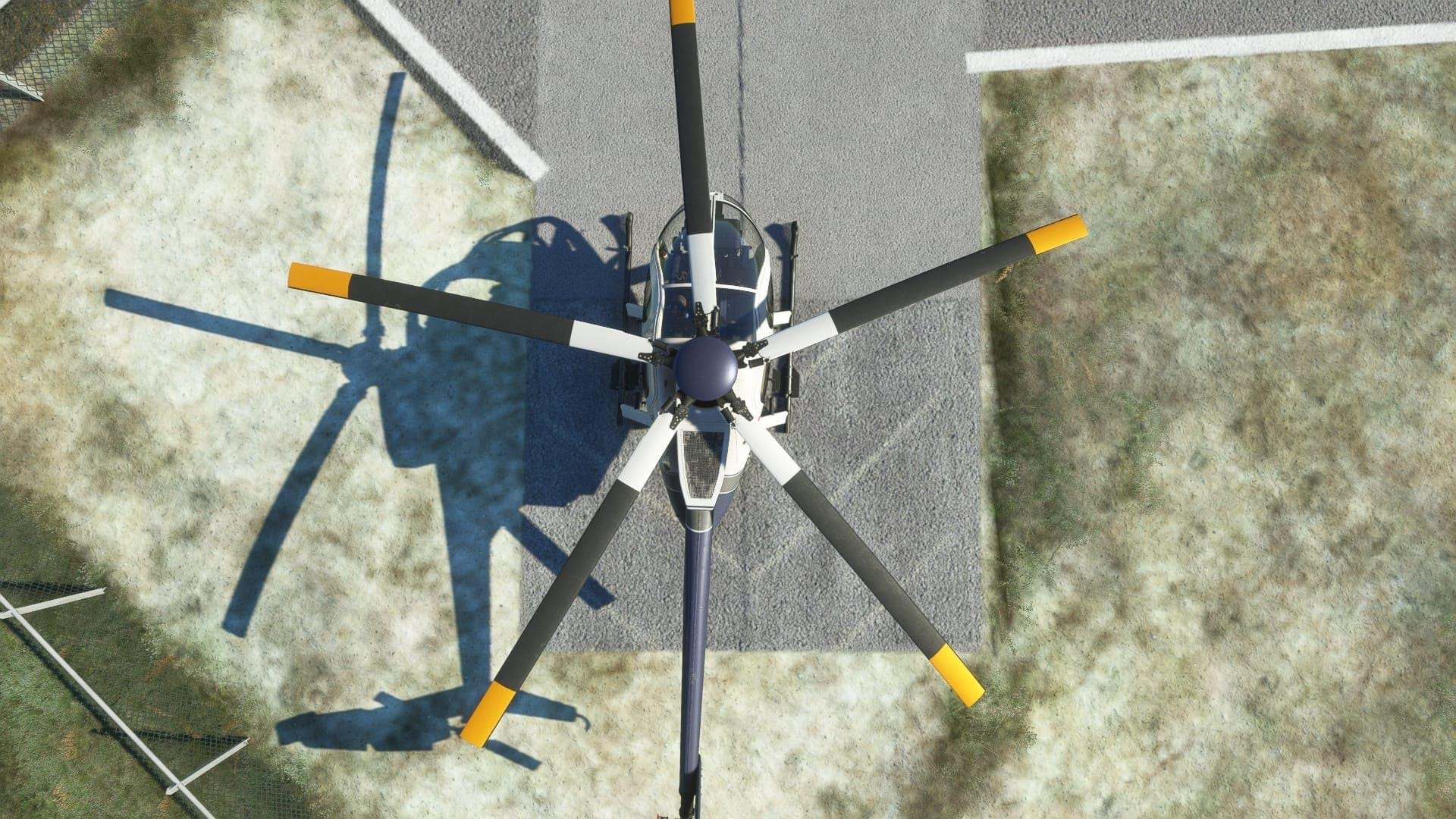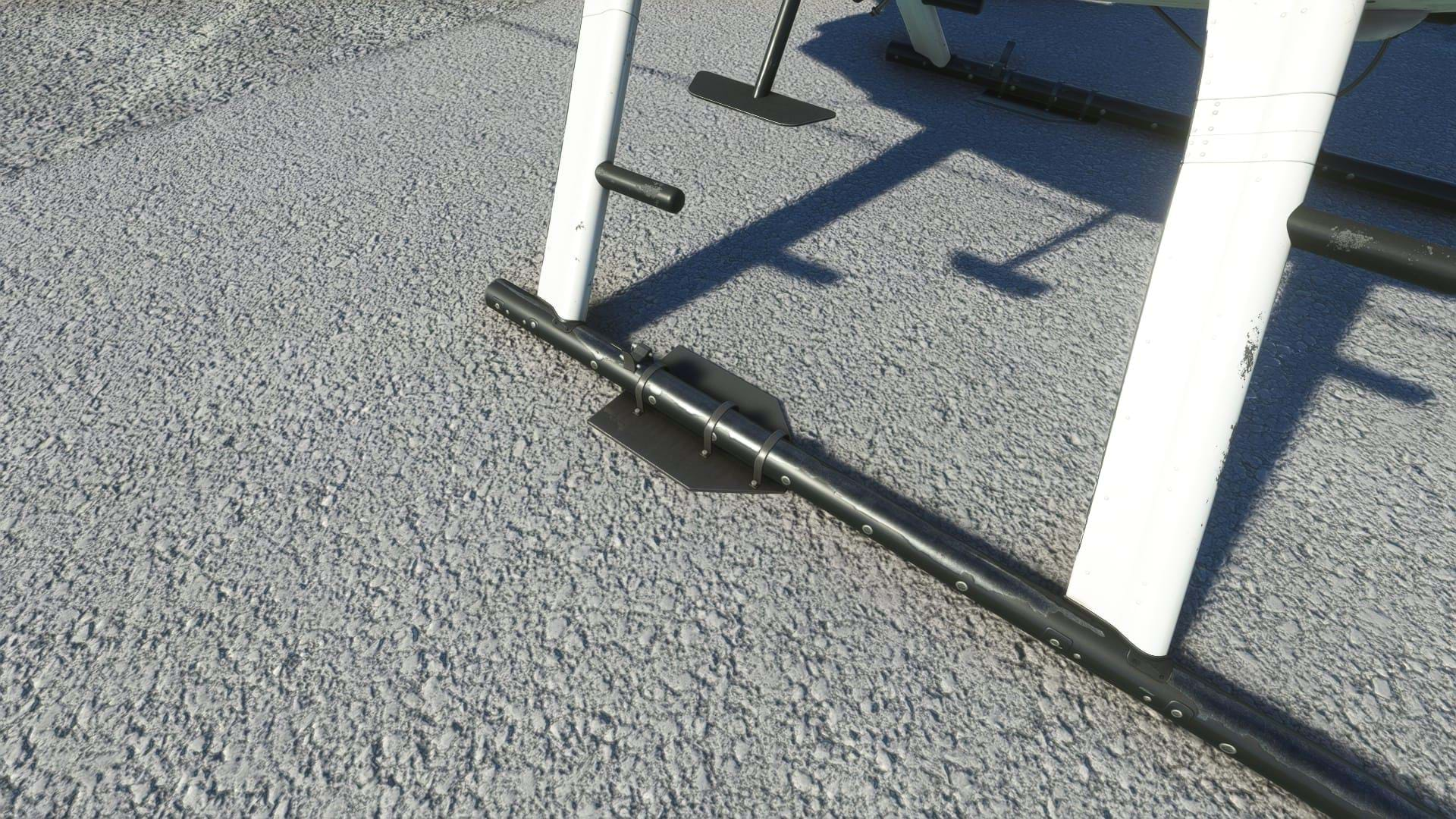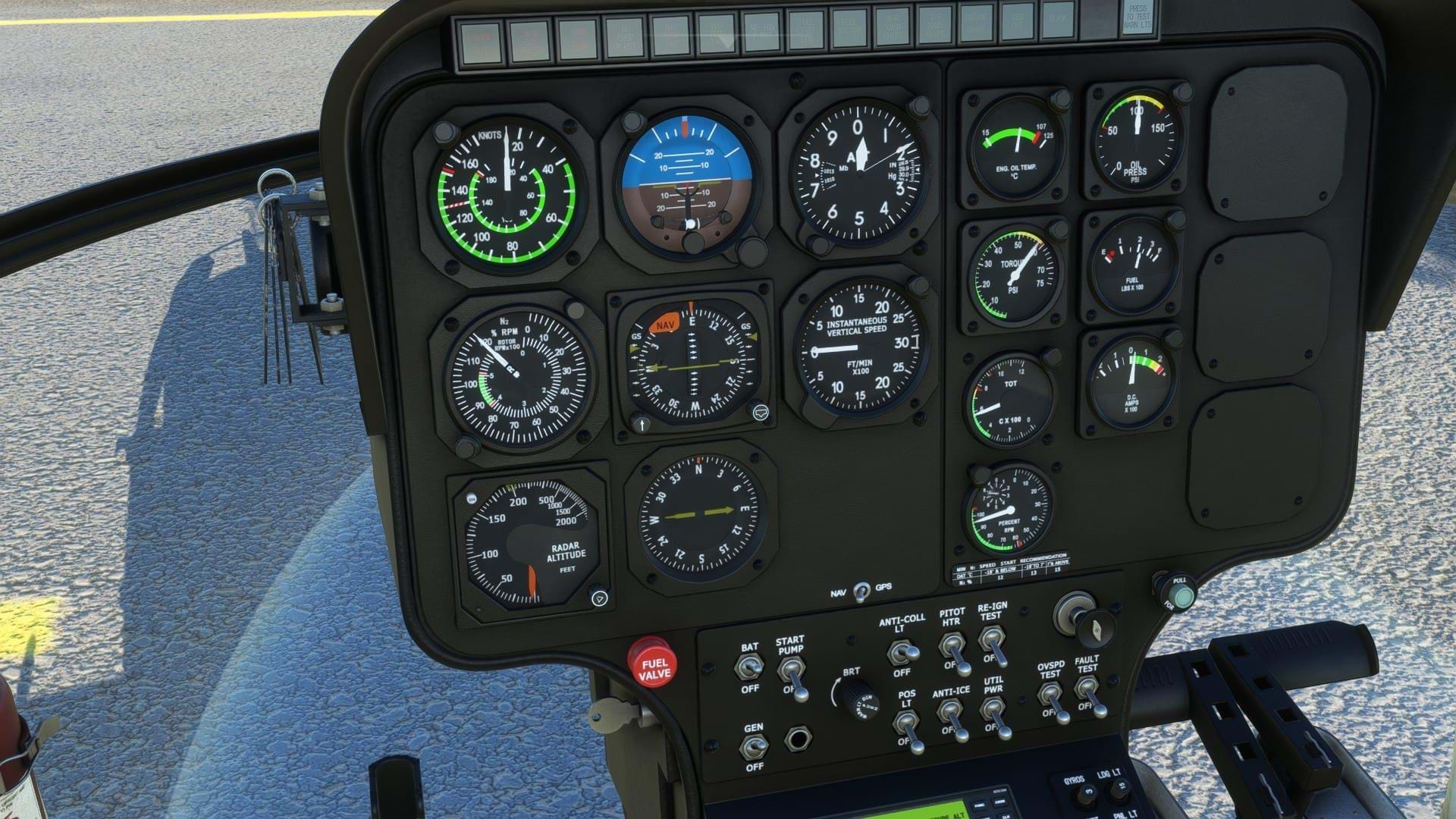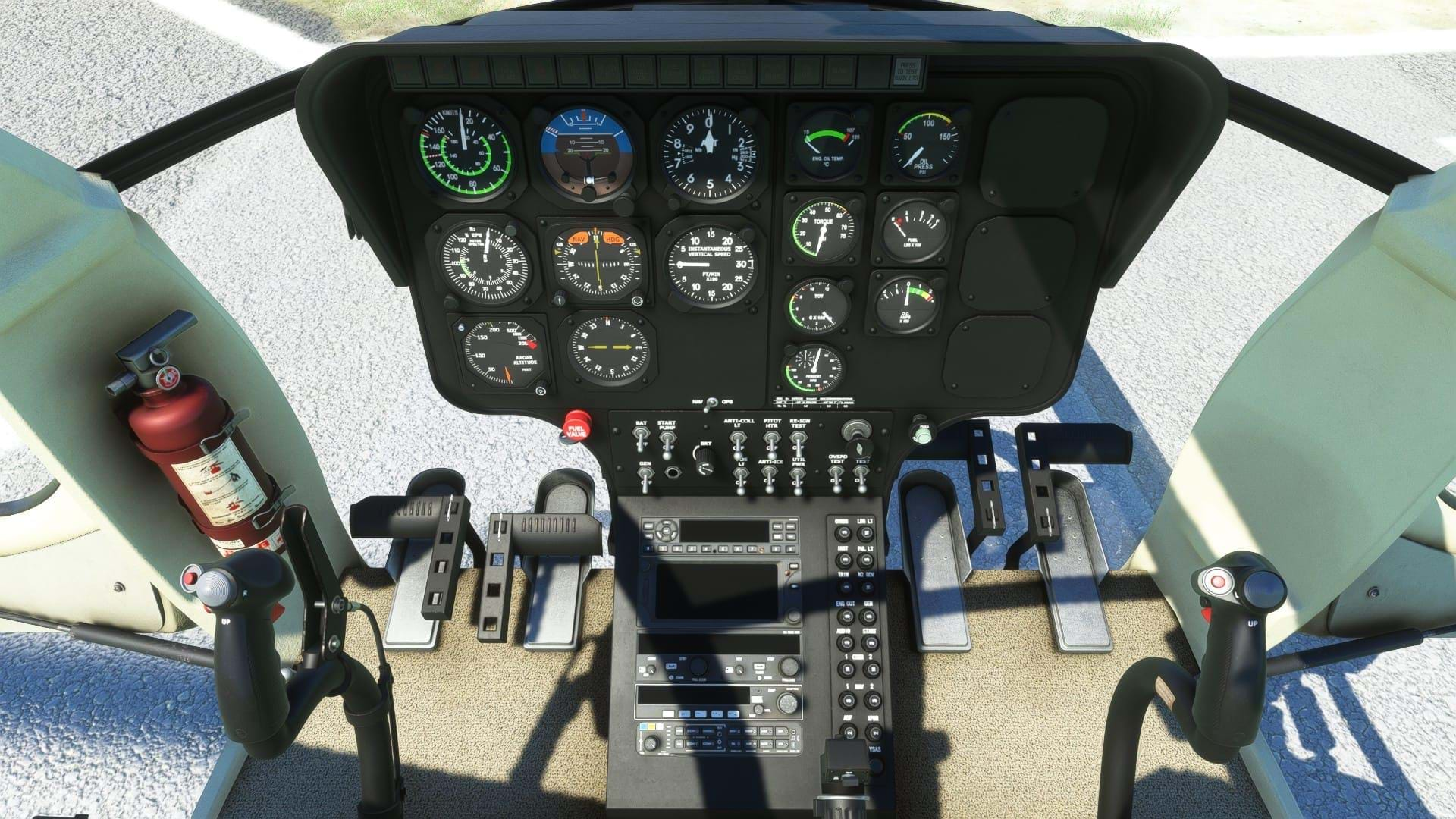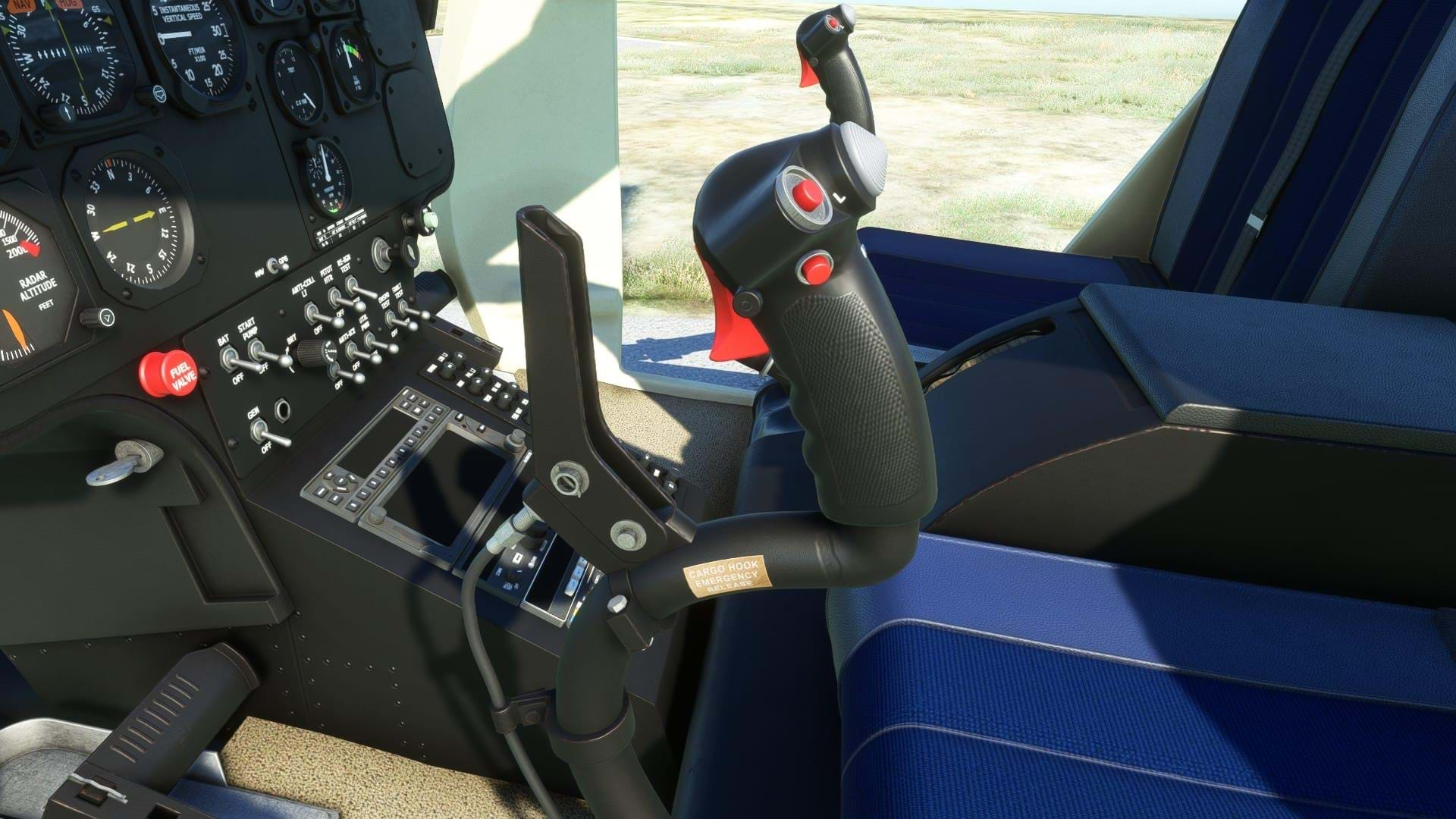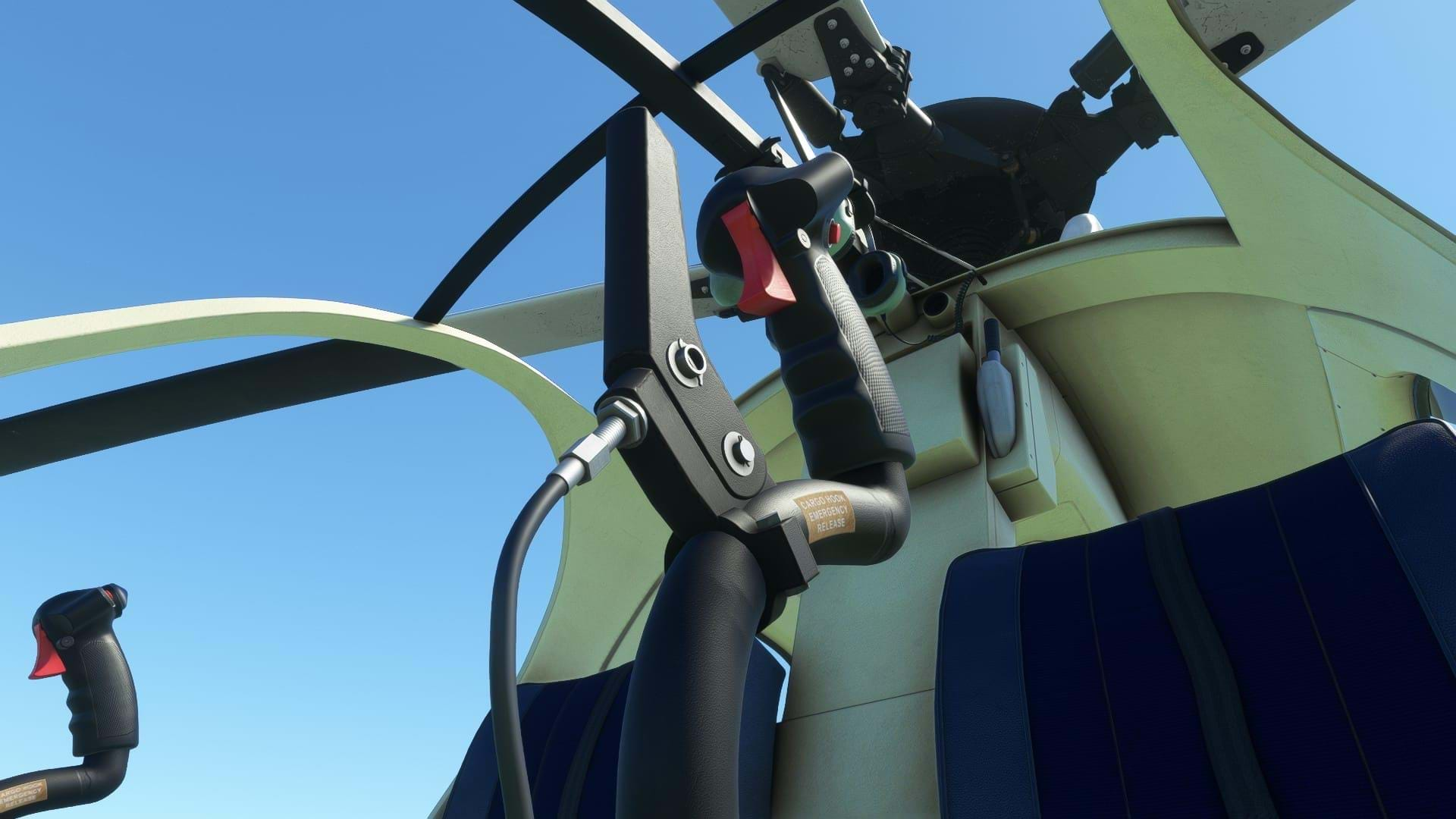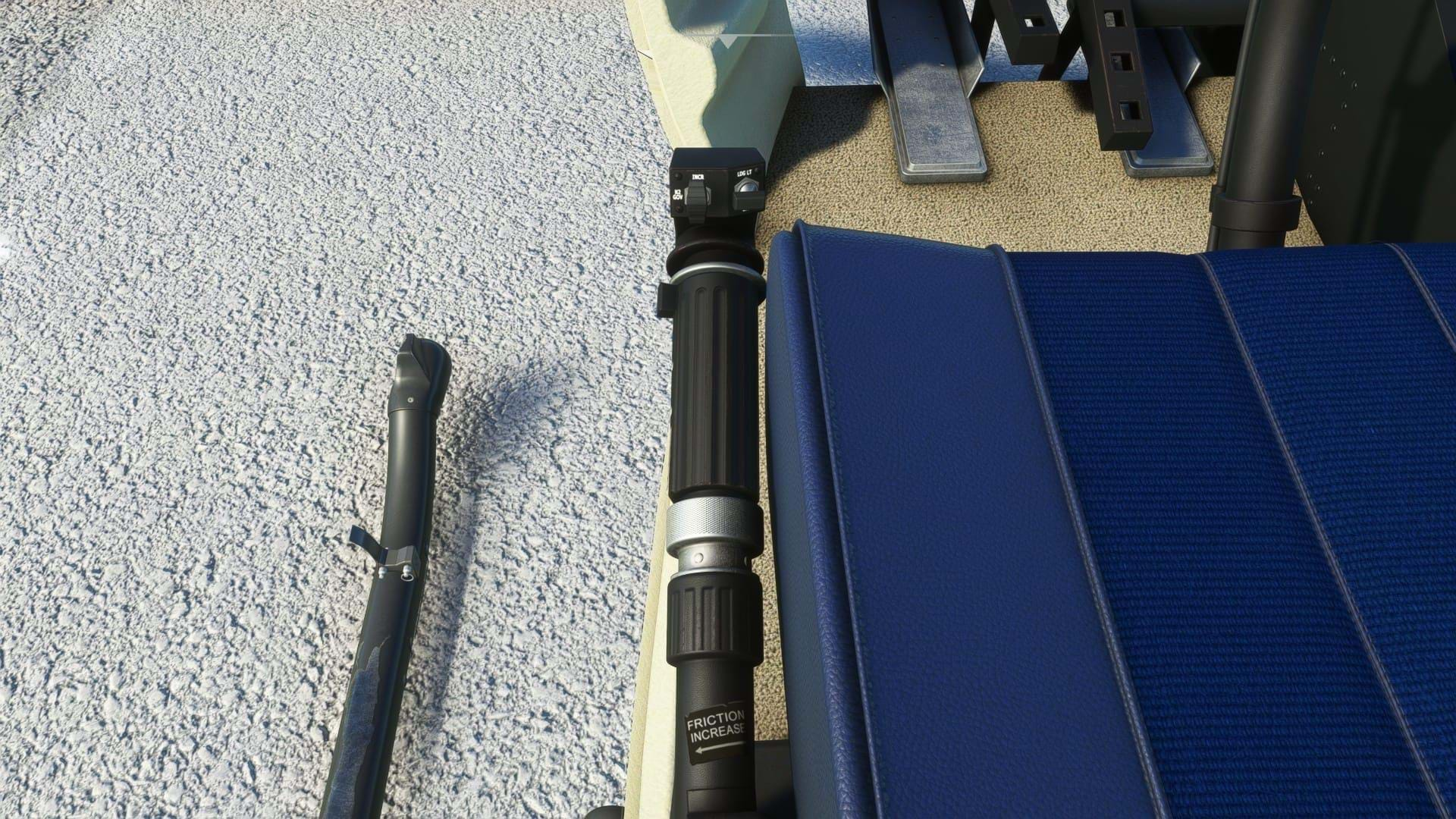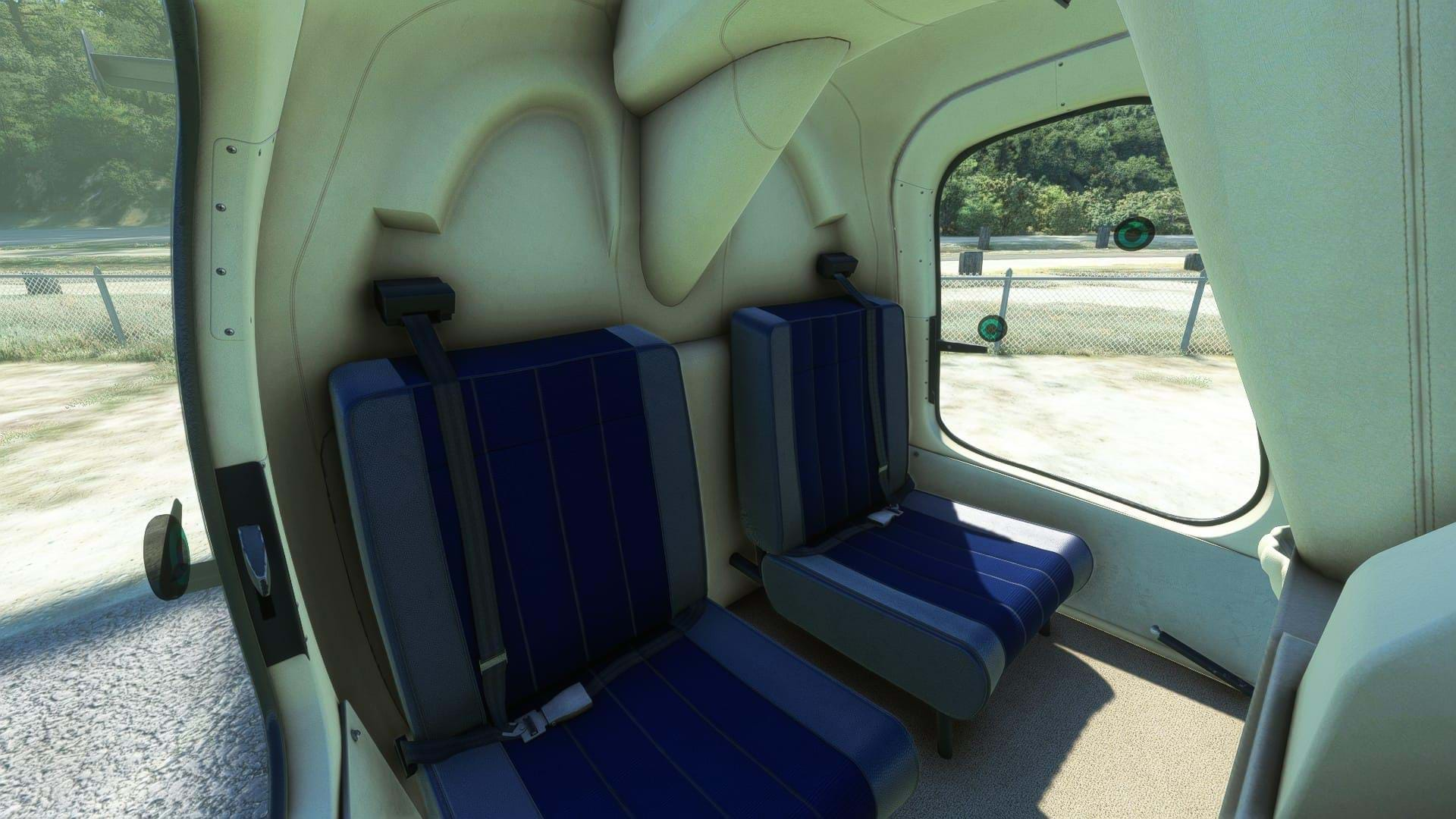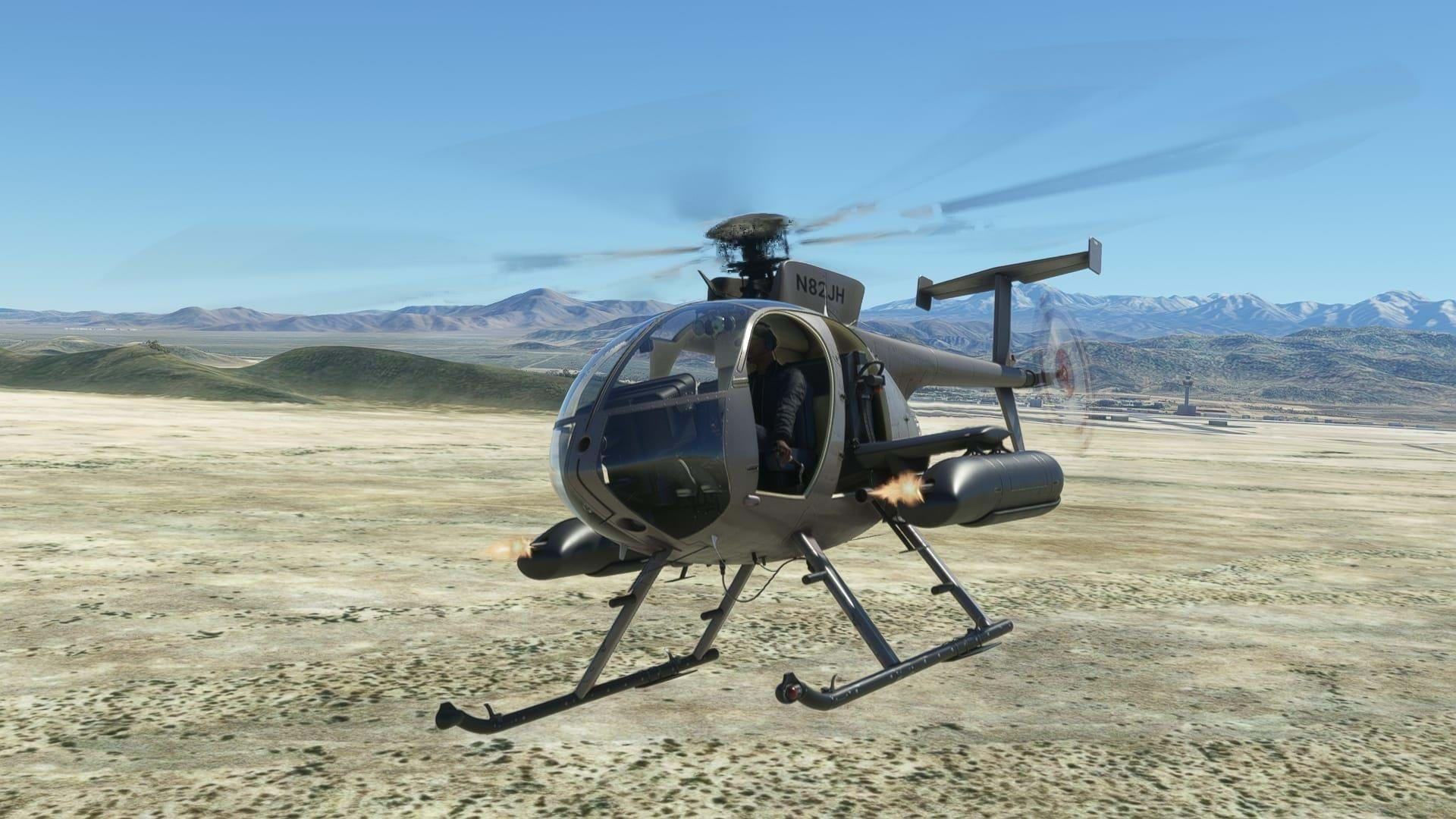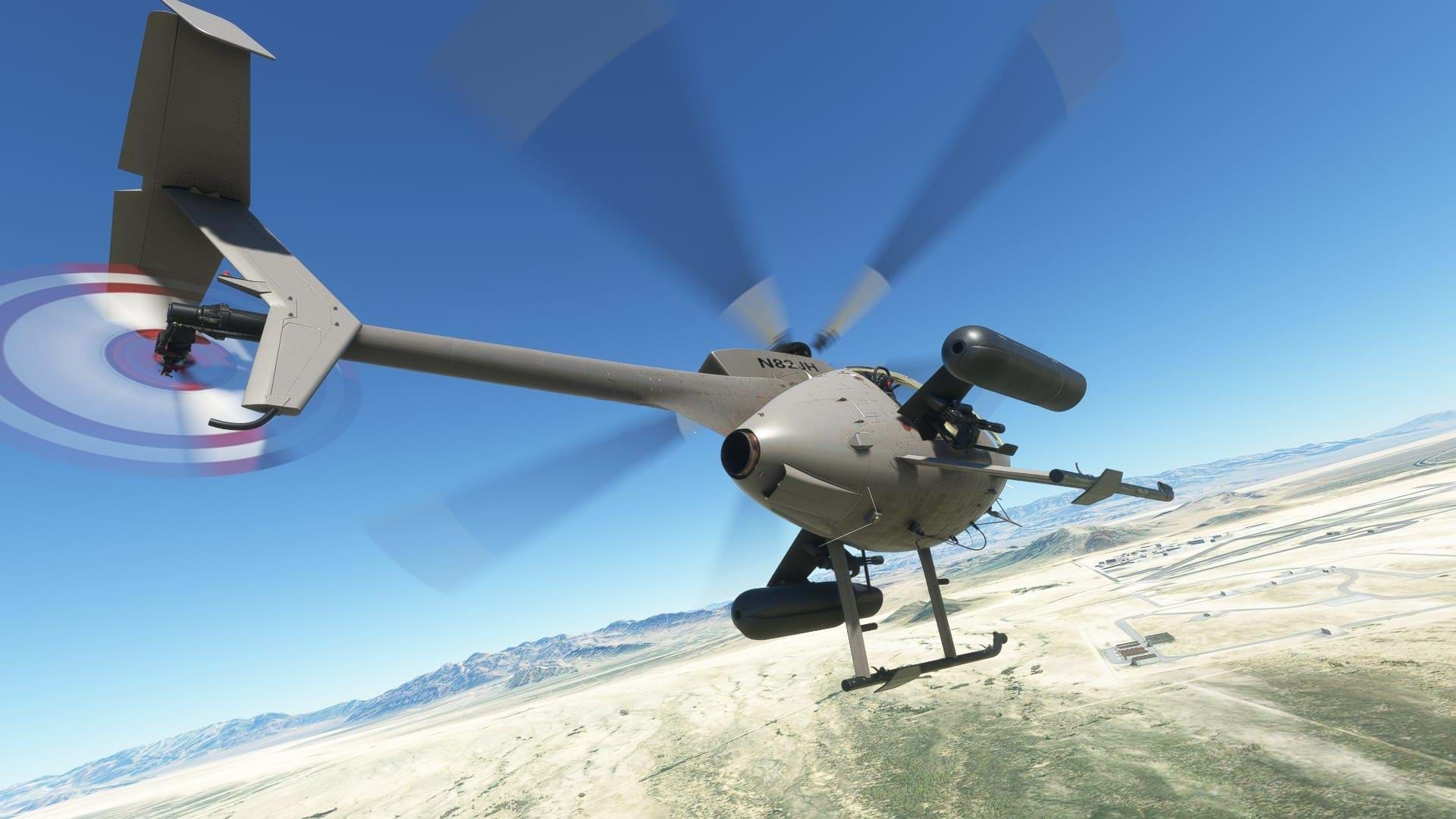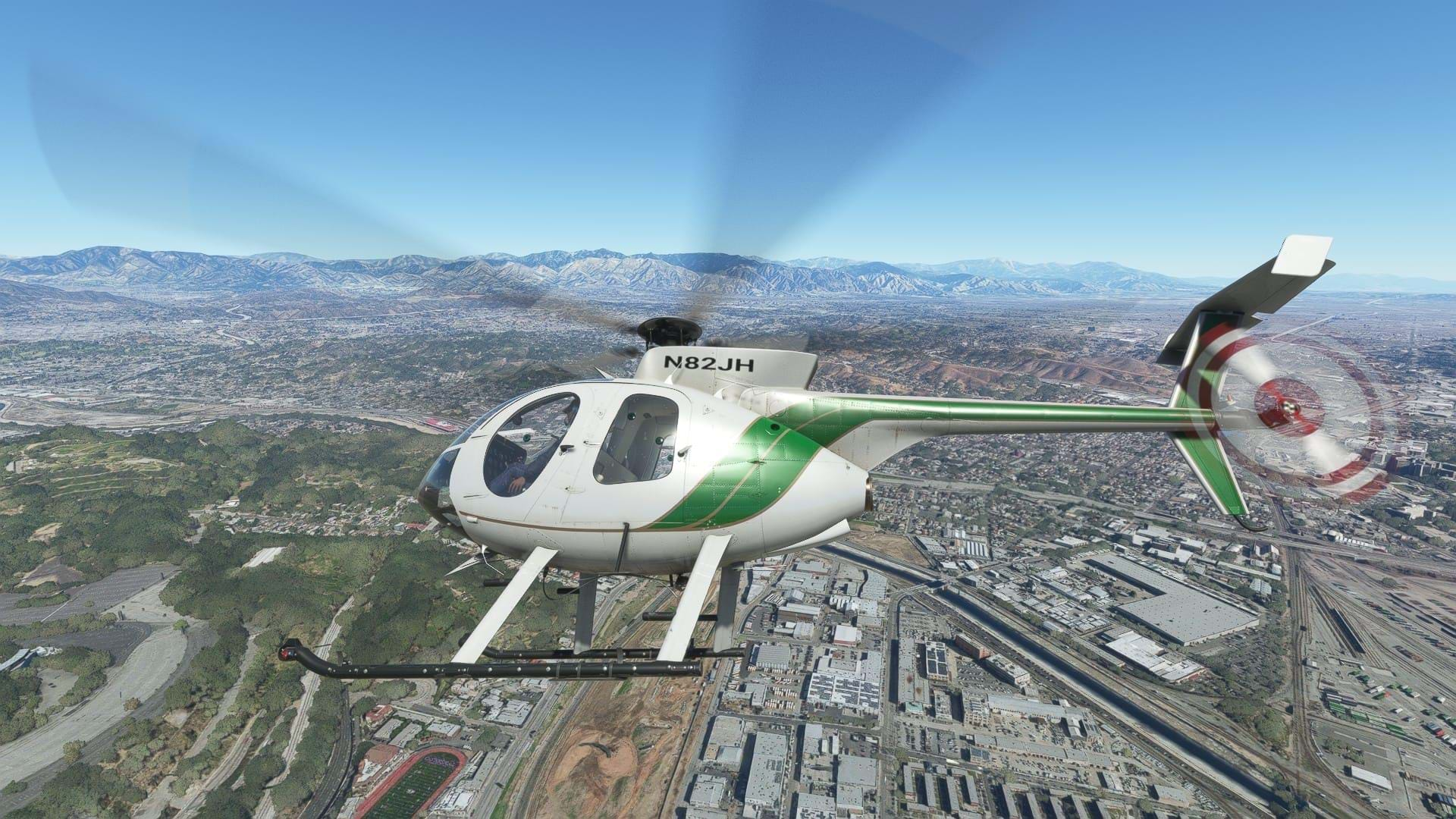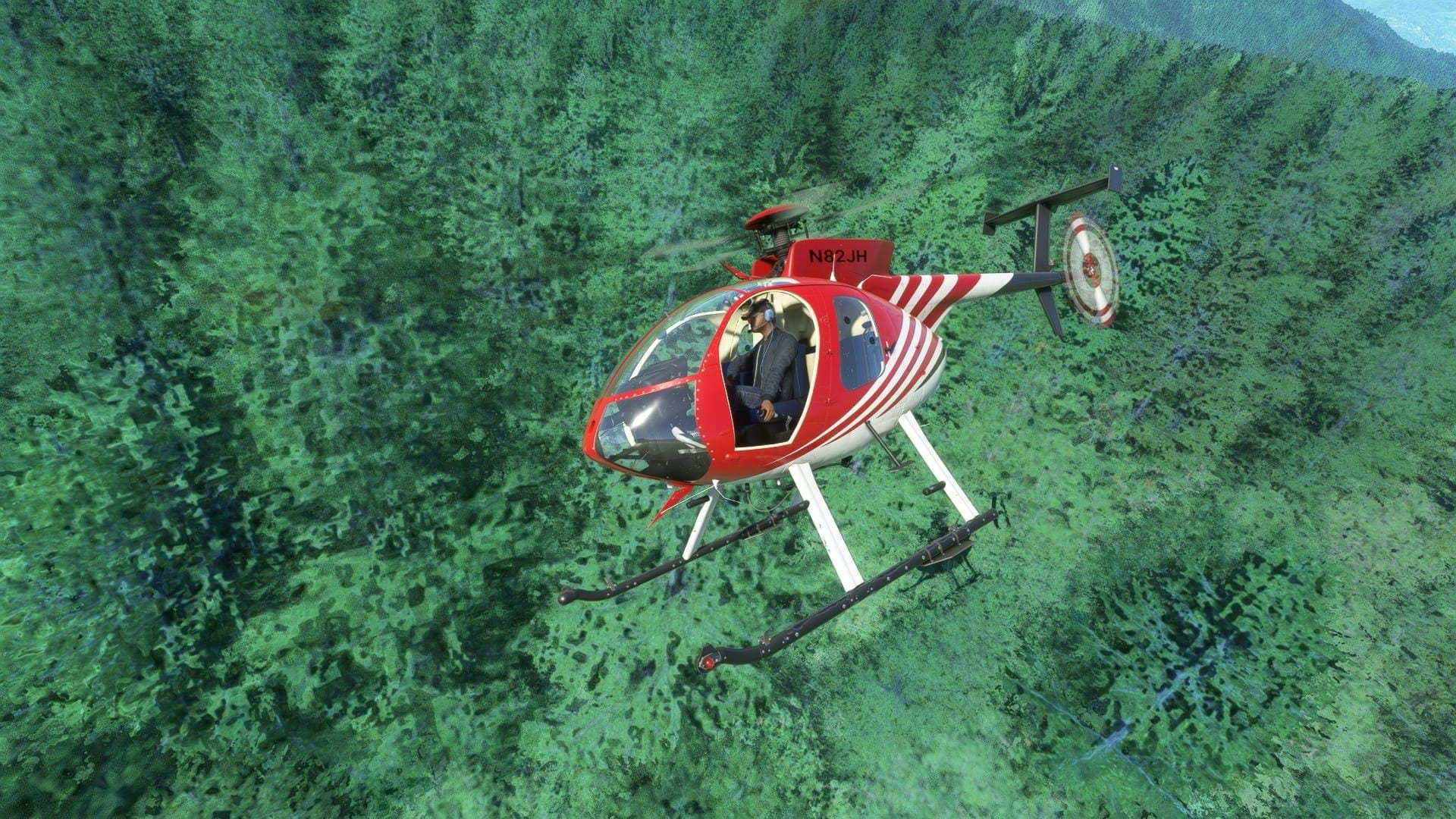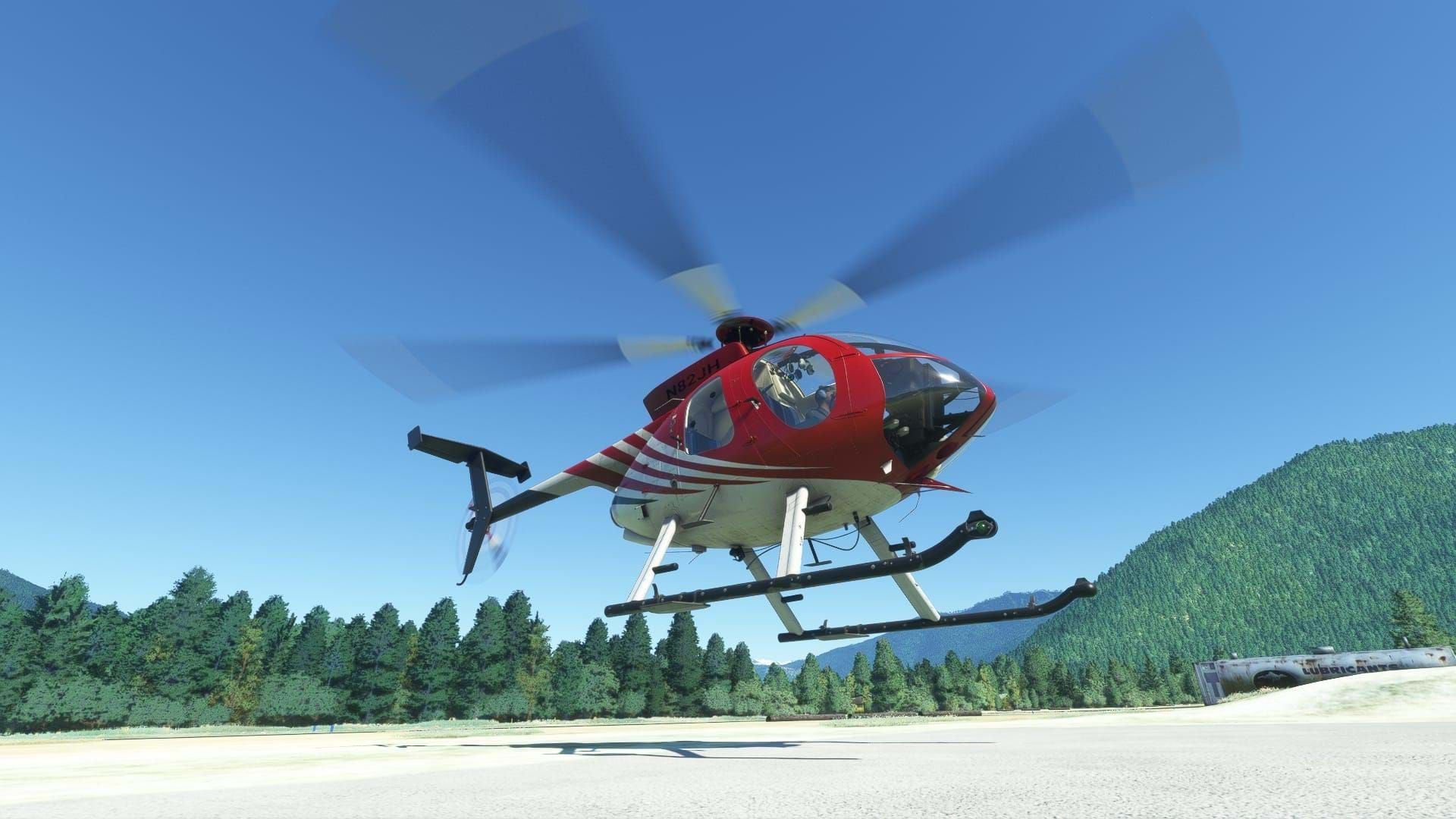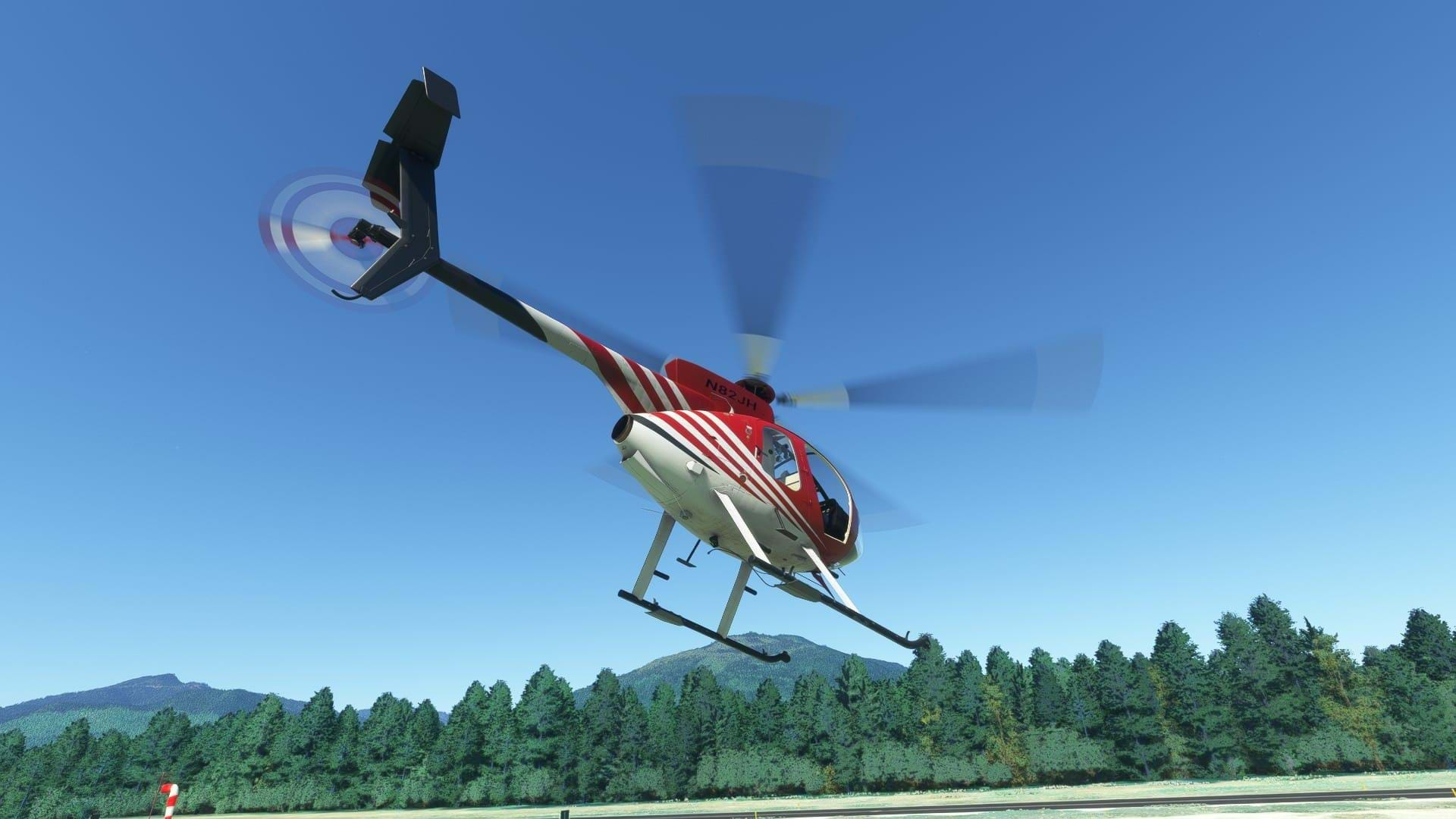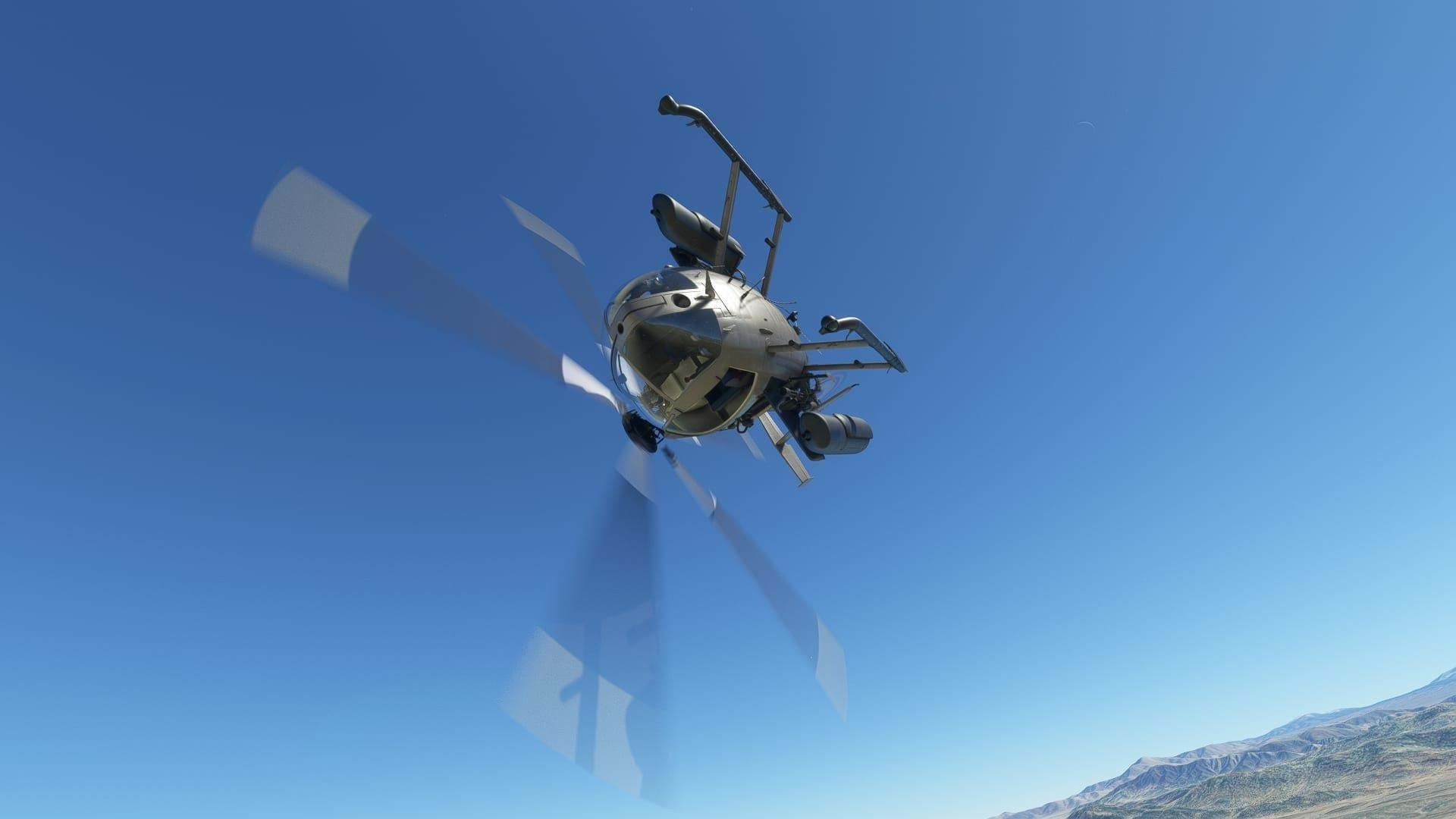The 500 series of helicopters has been a favorite of pilots since its introduction in the 60’s. As such, it’s also a favorite in the flight simulation community too.
I first got to fly the 500 20 years ago, it was my first big step from piston-powered helicopters to turbine. And although the 500 wasn’t my first turbine, it was the first turbine I got comfortable with and was an absolute joy to fly. Although I don’t get to fly one nearly as often as I used to, when I do, it’s always a good time.
Of all the 500s variants, the 530F is my favorite. A small helicopter with a big engine is always something to love. Despite this, the 530F has only made one other appearance in a flight simulator, and that was all the way back in FSX.
Milviz produced my favorite FSX addon of all time (yes I know the Dodo 206 exists, I said what I said) by bringing the 530 into the sim world. It was a first-day purchase for me. Between the Milviz 530 and the CeraSim 212, you would be hard-pressed to find my flying anything else in FSX. Now Milviz has rebranded as Blackbird simulations and launched a new line of lower-cost add-ons for MSFS under the name Shrike.
Full Disclosure
As always I always divulge when I’ve had input in the development of a product. While my input was limited, I still got to interact with the development team and test several versions of this model before its release. So if my review seems overly positive, it’ll likely be because I’ve already addressed my complaints with the developer prior to its release.
Installation
This model installs easily with an installation program. Installation is that simple
First look
This model looks very similar to the FSX model. It very well may be the same one, just updated for the modern MSFS. Either way, it looks really good.
In my opinion, this fuselage is the best looking representation of a 500 to date. The details that really stand are the ones that make the 530 visually distinct from a 500E.
The extra fairings on the engine cowling to accommodate the C30 engine as well as the one-piece exhaust are really cool to see.
Another distinguishing feature of the 530, is the tail boom extension. To increase the hot and high performance, MD added an extension to the tail boom to mount the tail rotor. This makes the tail rotor more efficient by giving it a longer arm for more leverage.
Speaking of the tail, there’s an animation there that I didn’t notice during testing. It seems like the horizontal stabilizer has an elevator for some reason. The trailing edge of the horizontal stabilizer pitches up and down like the elevator of an airplane when the cyclic is moved in the pitch axis. This isn’t a feature I’ve ever seen on any production model 500.
The main rotor of this model is very well detailed when the rotor is stopped. The visible components are depicted really well. Although the main rotor is modeled well, the scale of it seems a little big to me. This is especially visible in the main rotor blades, which look a little too wide to me. I noticed this on the FSX version as well.
The main and tail rotor are animated, but there are only animations for collective input. This isn’t a big deal, just something I noticed.
The skids on this model are more accurately modeled than on other models, however, if I had one complaint it would be the placement of the bear paws. They’re placed mid-skid when these are designed to be installed on the heels of the skids.
The cockpit of this model is very familiar. The scale and proportions of it feel right in VR. The instrument panel looks pretty standard for a 500. It has an extended center column which is common on law enforcement 500s to accommodate the extra radios.
However, this model uses that to house standard avionics, radios, transponder, and GTN650. Even though this model is very reminiscent of the FSX version, the textures of the cockpit are well up to modern standards.
The collective and cyclic look really good. However, there’s an extra button on the B7 grip that I don’t recognize. That doesn’t necessarily mean that it’s not a button that’s been on a 500 cyclic, but I’ve never seen one on any of the 500s I’ve flown.
Usually, if extra buttons are required for the mission the aircraft is required to perform, they are either mounted to the collective or a B-8 or T-style flight grip is used that offers more options. The cyclic also features a manual cargo hook release which would be great if MSFS had a native external load simulation to go along with the belly hook.
The back seat looks cramped and uncomfortable, so basically it’s accurate.
While there are several liveries included. I really would have liked to have seen a paint kit for this model.
Sounds
The engine start-up sounds are really good for this model. The classic and satisfying C20 startup sound is there and represented well. The external sounds sound really good and take advantage of MSFS’s dynamic soundscape.
The internal sounds are a little less convincing to me. They aren’t bad, don’t get me wrong, but didn’t sound quite right to me. I went back and looked at some videos taken from the cockpit of my last few flights in a 500, and what stood out to me in the comparison is that you really don’t hear a lot of the rotor noise in the cockpit of the 500.
The majority of the noise you hear is from the transmission and engine. The cockpit sounds on this model tend to feature more rotor noise than one would normally hear while flying. You also miss the sound of power changes that are really obvious when you bring in lots of collective and the bottom end of an approach or coming to an OGE hover. That being said, there’s a distinct difference in sounds when flying doors off versus doors on so that’s cool.
Systems
Systems are really hard to judge in MSFS because the native turbine helicopter modeling framework is essentially broken.
The only developer to really crack the code on this is FlyInside with their fantastic Bell 206. Every other turbine Helicopter including the default Bell 407 suffers from similar issues with the throttle, governor, and engine.
In my opinion, with MSFS 2024 on the horizon, it’s unlikely that we’ll see a fix for this in the current version, which is okay, as long as the new sim is a bigger step up than just fixing the throttle/engine/governor coding for turbines.
All of that being said, the 500 isn’t a complex aircraft, and the systems on this machine aren’t very complex. Because of the coding problems in MSFS, it’s hard to complete the full engine start with just your hardware. It takes some mouse interaction for the throttle.
After the engine is up and running, you’re again required to use the mouse. While technically this all “works” it pulls you out of the immersion of flying, especially in VR. This is more of a rant about MSFS and not Shrike. Shrike does a pretty good job with the systems. The electrical system responds appropriately to battery and generator power, and the lights and warning panel are also mostly represented accurately.
The Shrike 530 also has a really fun weapons add-on. Although the two outboard .50 caliber and twin inboard M134 machine guns aren’t functional, they visually transform the model into an MD 540F, the proposed military export version of the 530.
You also get options to add a searchlight.
Flight Dynamics
The flight dynamics of this model are pretty good. It rapidly became one of my favorite models for MSFS.
It’s really difficult to really gauge how close a simulated 500 is to a real one. The biggest reason being the lack of hydraulics on the 500 series of helicopters. Because of this, there’s a lot higher control loading on the cyclic requiring the use of a spring tension force trim system.
This is impossible to replicate with software alone and would require a pretty intense and robust force feedback system. So without that, one has to look at other ways to measure realism.
Cyclic response and control input required at a hover is pretty close to what I remember in a 500. The 500 is a very stable helicopter for its size, and this model is representative of that. The amount of pedal needed at a hover feels right, and yaw rates seem on the mark. It even picks up the left side low.
While there’s no real difference between IGE and OGE power required, the model will settle into an IGE hover if you lower the collective to just below hover power. I’m not sure how that math works, but it happens. Translational lift is also very apparent in this model which adds to its realism.
In cruise flight, this model shows off the trademark agility. This is just a fun model to fly, plain and simple. There’s one complaint that I have and that’s the trim ball. It doesn’t really seem to care where the pedals are and doesn’t much care about how much air is flowing over the sides of the aircraft or the vertical stabilizer. It just hangs out left of center unless you apply almost all of the left pedal available.
As I said before, this model suffers from a lot of the same problems that other MSFS turbine helicopters do. So training autorotations really isn’t realistic or practical. It’s not really Shrike's fault, but it is a definite negative. Getting a needle split and a good autorotational decent isn’t something you’ll get in this sim right now unless you’re using a FlyInside model.

